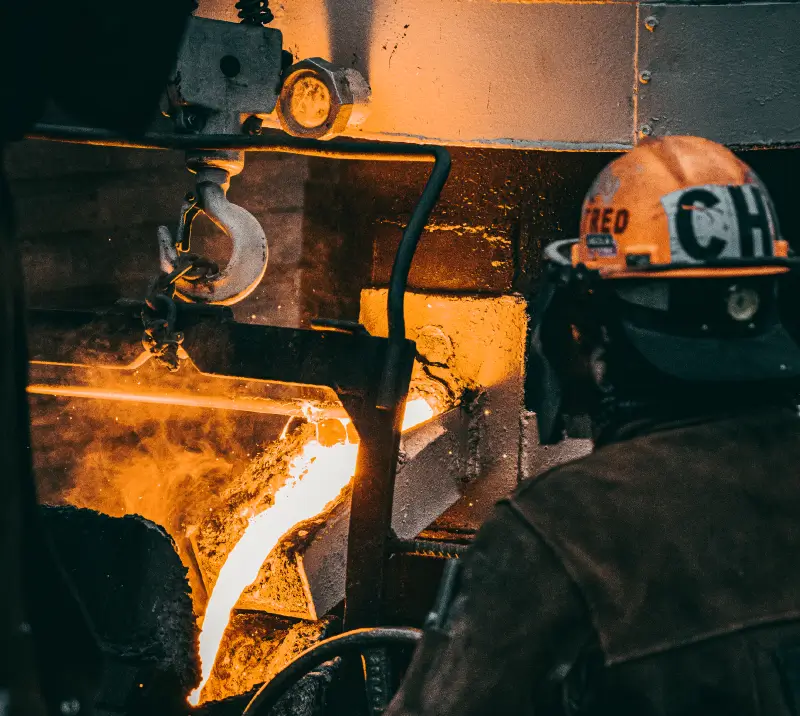Casting is one of the most important processes in the production of industrial parts, widely used across various industries due to its high flexibility and the ability to create complex parts. In this method, metals are melted at high temperatures and poured into molds with pre-determined shapes. After cooling, the metal takes the shape of the mold, creating a complete part.
The Casting Process
The casting process generally includes several stages:
Design and Fabrication of the MoldThe first step in casting is designing a mold that determines the shape of the final part. These molds can be made from various materials such as sand, metals, and ceramics. The choice of mold material depends on the type of metal and the characteristics of the part.
Melting the MetalAfter the mold is prepared, the chosen metal is heated in specialized furnaces until it reaches its melting point. The selection of metal depends on the requirements of the final part; common metals used in casting include iron, aluminum, copper, and their alloys.
Pouring the Metal into the MoldAfter melting the metal, it is carefully poured into the mold to fill all the cavities. Precision in this stage is crucial, as any defects in pouring can lead to voids or flaws in the final part.
Cooling and Removing the PartAfter pouring the metal, the mold gradually cools and the metal solidifies. Once the part is fully cooled, the mold is either broken or removed to release the final piece.
Finishing and Final AdjustmentAfter removing the part from the mold, it may require final adjustments such as machining, polishing, or addressing surface defects to prepare the final piece for use.
Types of Casting
Casting is performed using various methods, each suited to specific conditions and materials:
Sand CastingIn this method, sand is used as the mold material. Sand casting is highly practical for producing large and complex parts due to its low cost and high flexibility.
Permanent Mold CastingIn this method, molds are made from metal and can be used multiple times. It is suitable for producing parts in high volumes.
Die CastingIn this method, molten metal is injected into the mold under high pressure. It is used for producing parts with high precision and in large quantities.
Advantages of Casting
Production of Complex PartsCasting allows for the production of parts with complex shapes and intricate details that may not be achievable with other methods.
Use of Diverse MaterialsThis process allows for the use of various metals and alloys, which can be chosen based on the requirements of the part.
Cost-Effective for Mass ProductionCasting is very suitable for mass production, as the cost per part decreases with increasing volume.
Applications of Casting
Casting is used in many industries, including automotive, aerospace, heavy machinery, electrical equipment, and even household appliances. Parts such as engine blocks, machine bodies, and precision tools are among the items produced using casting.
Conclusion
Casting, as a key industrial manufacturing method, continues to play an important role in producing metal parts. Due to its flexibility and wide range of capabilities, it is used in both small and large-scale production. With technological advancements, newer and more efficient methods are continually introduced to enhance accuracy and performance.

Comments are closed